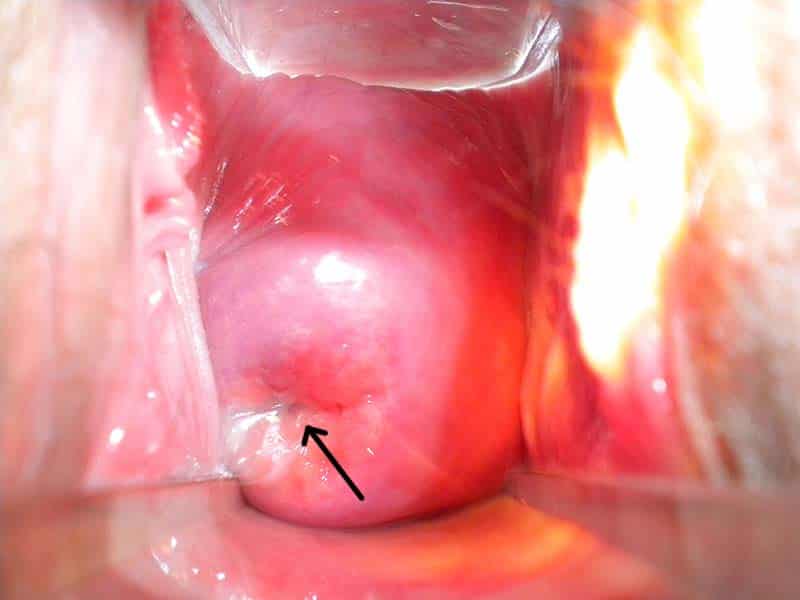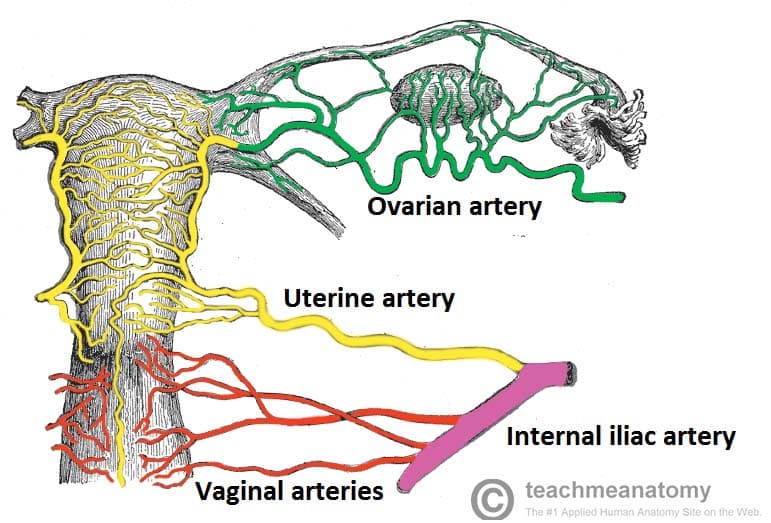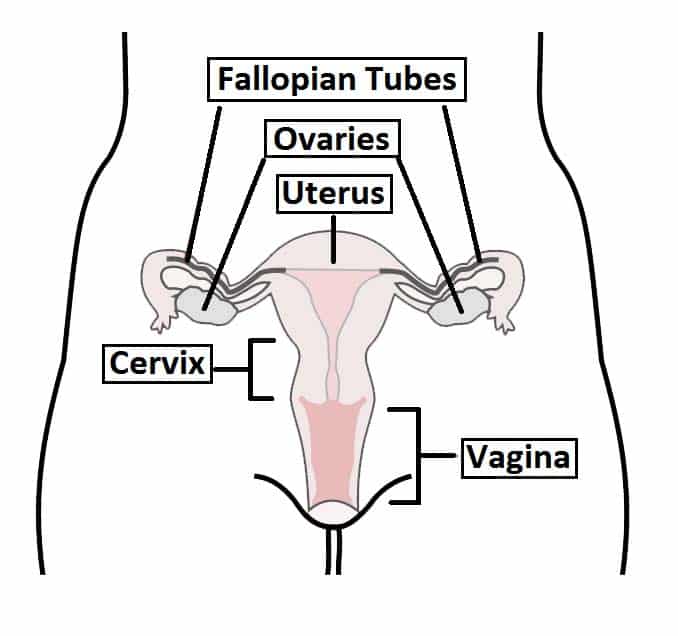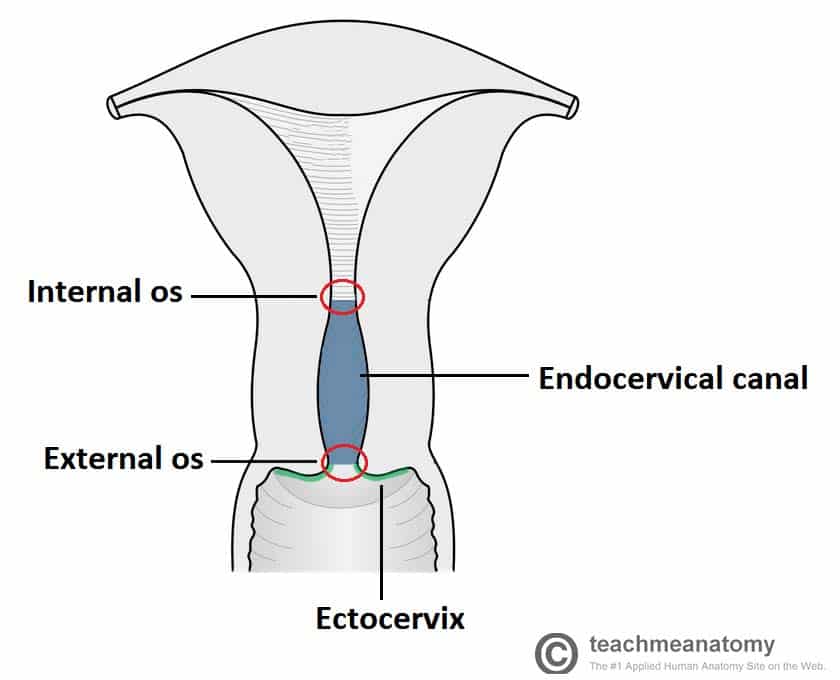The cervix is the lower portion of the uterus, an organ of the female reproductive tract. It connects the vagina with the main body of the uterus, acting as a gateway between them.
Anatomically and histologically, the cervix is distinct from the uterus, and hence we consider it as a separate anatomical structure.
In this article, we shall look at the structure of the cervix, its vasculature, innervation, functions, and any clinical relevance.
Anatomical Structure
The cervix is composed of two regions; the ectocervix and the endocervical canal.
The ectocervix is the portion of the cervix that projects into the vagina. It is lined by stratified squamous non-keratinized epithelium. The opening in the ectocervix, the external os, marks the transition from the ectocervix to the endocervical canal.
The endocervical canal (or endocervix) is the more proximal, and ‘inner’ part of the cervix. It is lined by a mucus-secreting simple columnar epithelium. The endocervical canal ends, and the uterine cavity begins, at a narrowing called the internal os.
Functions
The cervix performs two main functions:
- It facilitates the passage of sperm into the uterine cavity. This is achieved via dilation of the external and internal os.
- Maintains sterility of the upper female reproductive tract. The cervix, and all structures superior to it, are sterile. This ultimately protects the uterine cavity and the upper genital tract by preventing bacterial invasion. This environment is maintained by the frequent shedding of the endometrium, thick cervical mucus and a narrow external os.

Fig 3 – The ectocervix, visible via a speculum inserted into the vagina. The external os is marked with an arrow.
Vascular Supply and Lymphatics
The blood supply to the uterus is via the uterine artery. Venous drainage is via a plexus in the broad ligament that drains into the uterine veins.
Lymphatic drainage of the uterus is via the iliac, sacral, aortic and inguinal lymph nodes.

Fig 4 – Posterior view of the arterial supply to the female reproductive tract.
Clinical Relevance: Disorders of the Cervix
Cervicitis
Cervicitis is chronic inflammation and infection of the cervix, most commonly caused by Chlamydia trachomatis or Neisseria gonorrhoeae.
It is usually asymptomatic although pelvic pain, vaginal discharge, postcoital bleeding and dyspareunia may be present. Complications of cervicitis include pelvic inflammatory disease, whilst the potential blockage of mucus ducts and cyst formation increases the risk of infertility by increasing the hostility of the environment for sperm.
Cervical Cancer
There are two main classifications of cervical cancer:
- Squamous cell carcinoma – cancer of the epithelial lining of the ectocervix.
- Adenocarcinoma – cancer of the glands found within the lining of the cervix.
Infection of the female genitalia with human papilloma virus (HPV), is widely known as the cause of the majority of cervical cancers. Latest vaccinations against cervical cancer are, in essence, a vaccination against HPV.

